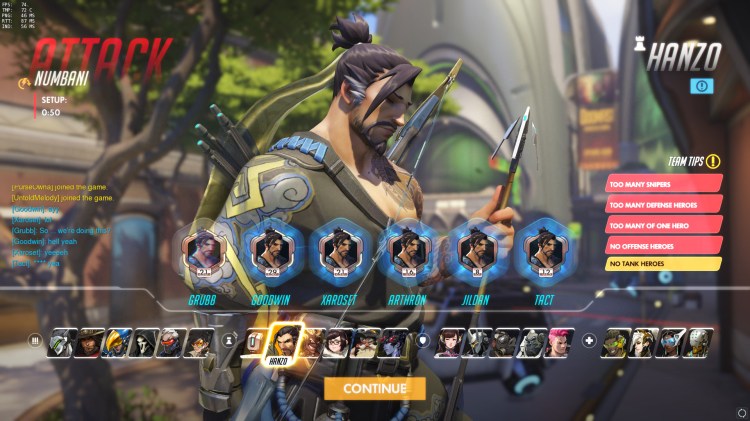Blizzard wants to improve the quality of online play in Overwatch, and that’s the purpose behind its next patch.
The studio is upgrading Overwatch’s netcode to a high-bandwidth mode that updates data (something called a tick rate) 60 times per second instead of only 21 times per second on PC. This patch will ensure that servers more accurately reflect player actions, and it could reduce instances where you do one thing and see another in the replay of your elimination. This feature only works with players that have enough bandwidth on their connection to support it. If you don’t, Blizzard has built in a dynamic tool that will automatically return you to the old update rate.
“The net result is that you will be shot around corners less and you’ll be able to predict escape moves better,” Overwatch lead engineer Tim Ford explained in a video presentation. “It should, in general, feel better.”
Overwatch senior engineer Philip Orwig said that the team is still investigating how it can do this on console, so Xbox One and PlayStation 4 players will have to wait before joining in on the fun. Everyone else should see a much better experience.
When it comes to online multiplayer games, developers are often dealing with three different realities. When I play an Overwatch match as Reaper, for example, Blizzard is getting input data from me, that data is getting sent with latency to a server, and that server is then sending my inputs to everyone else on the server. Because physics limits data speeds on a network, developers have figured out a number of tricks to predict what is happening in the 20-to-100ms that it has no data for. That fuzzy, indeterminate period of time is called the interpolation delay.
In Overwatch, the interpolation delay has typically hovered around 60ms. Now, after the high-bandwidth 60hz tick-rate update, that number is closer to 20ms for many players. That’s a huge improvement and is close to the minimum time that it takes the human eyes, brains, and limbs to process visual information.
Of course, this is still not perfect.
“Remember, all of our stuff is still predictive,” said Ford. “So while this update is bringing you more in line with the temporal authority of the server, there will still be cases where it mispredicts. If you have a really high latency, for example — or even if you have low latency and someone actually acts within a 20ms window, that prediction will fail.”
We’ll just have to wait for zero-latency quantum computing to come in and fix all these problems, and I’m sure Blizzard is working on that.
VentureBeat's mission is to be a digital town square for technical decision-makers to gain knowledge about transformative enterprise technology and transact. Learn More

